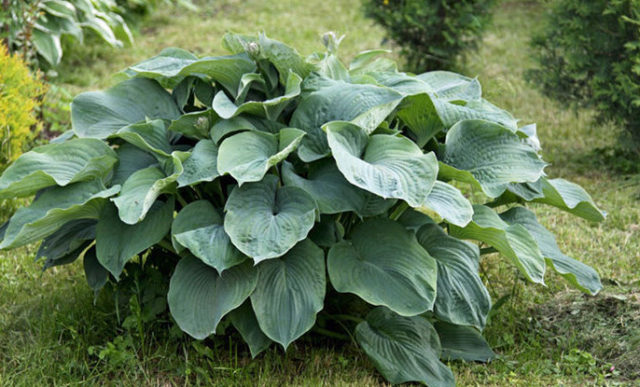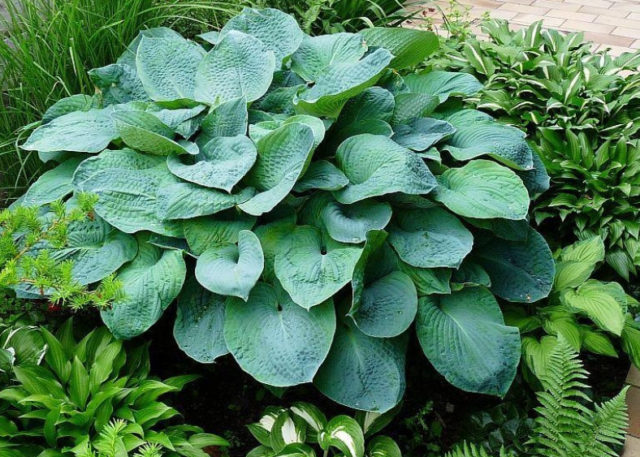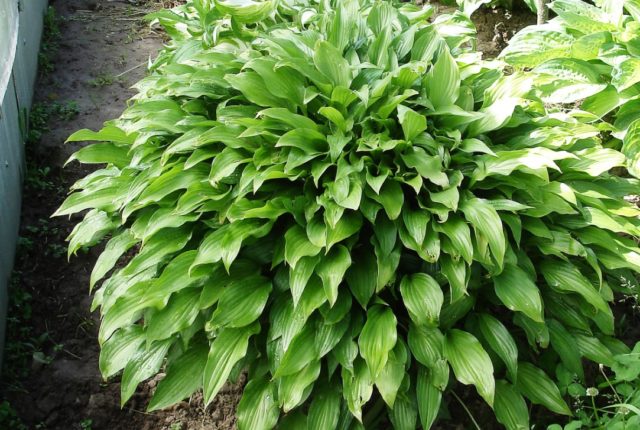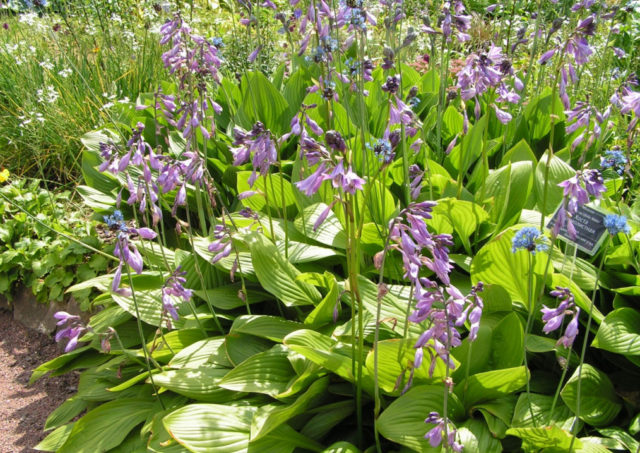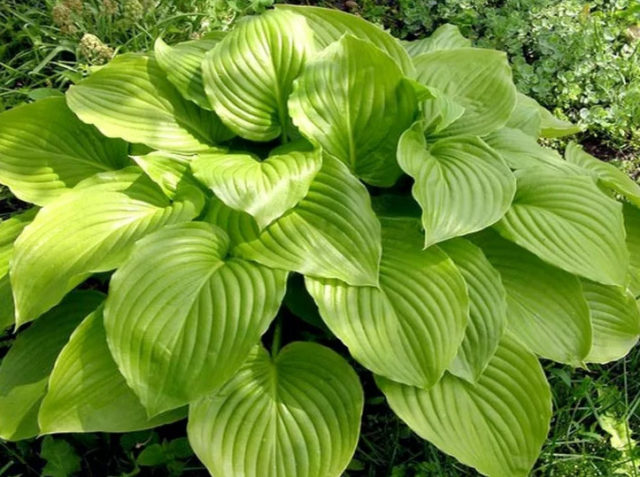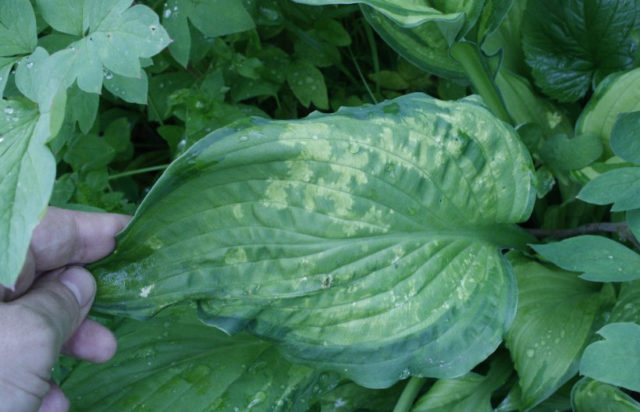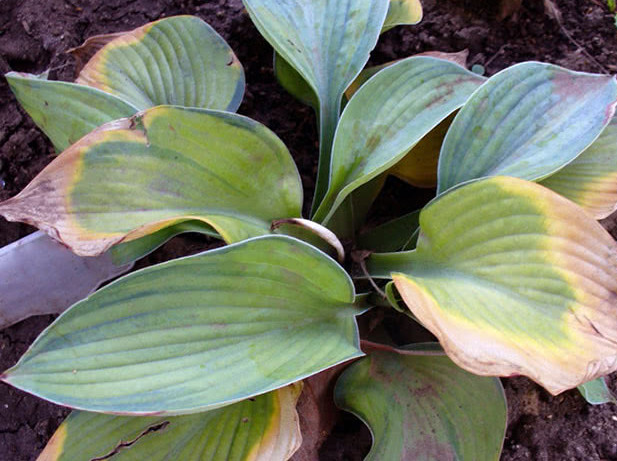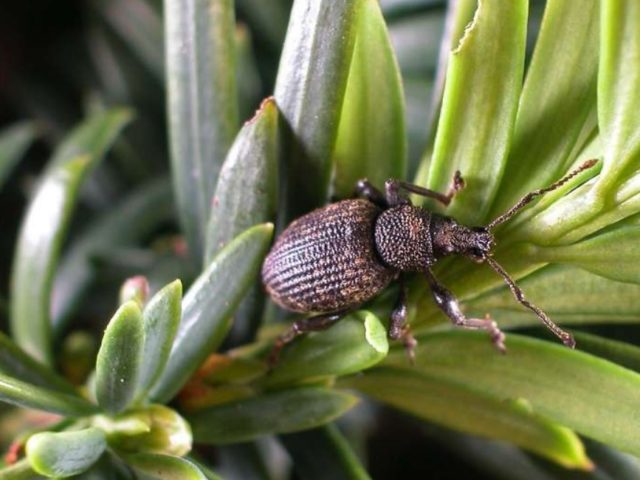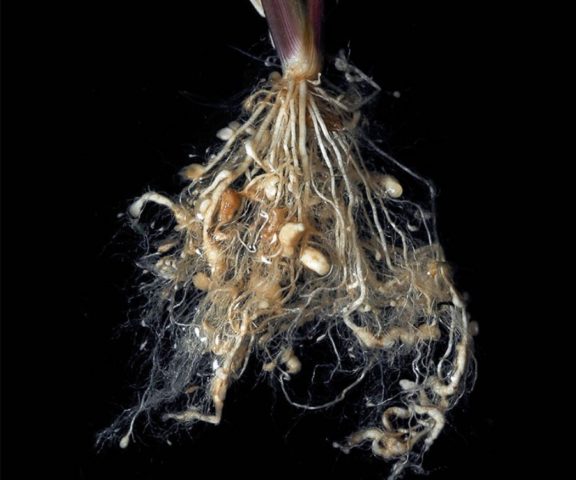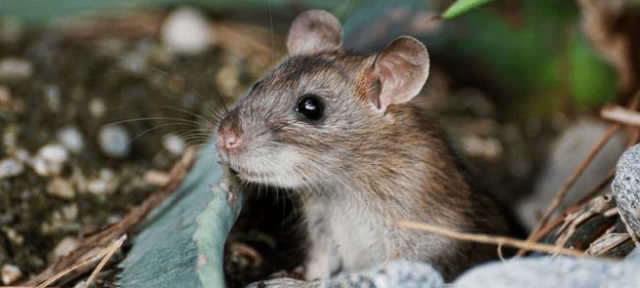Content
Growing a hosta from seeds is a very laborious and time-consuming process. It is a favorite plant of many gardeners. Due to its luxurious leaf cap and high decorativeness, the plant is often used in landscape design. True, in order to preserve the varietal accessories of the flower, it is necessary to grow from seeds. In the future, it can be used to decorate the garden and local area.
Is it possible to grow hosta from seeds
The main method of dividing hosts is vegetative (cuttings, division of rhizomes). But in the process of such cultivation, the plant gradually loses its main varietal prerogatives: the color and shape of the leaves, frost resistance. The way out is growing by seeds. In this matter, gardeners need specific knowledge of the agrotechnical process.
Nevertheless, it is possible to grow a hosta from seeds at home, although its germination rate will not exceed 80%. To increase this value, you will have to use special containers, sterile soil and growth stimulants.
Pros and cons of breeding hosts by seeds
The seed method of growing hosts is considered the least popular among the existing ones. There are several reasons for this:
- Long time from the moment of planting the seeds in the ground until the desired bush is obtained.
- The inability of the flower to preserve the main varietal characteristics - the resulting offspring is distinguished by a variety of different colors.
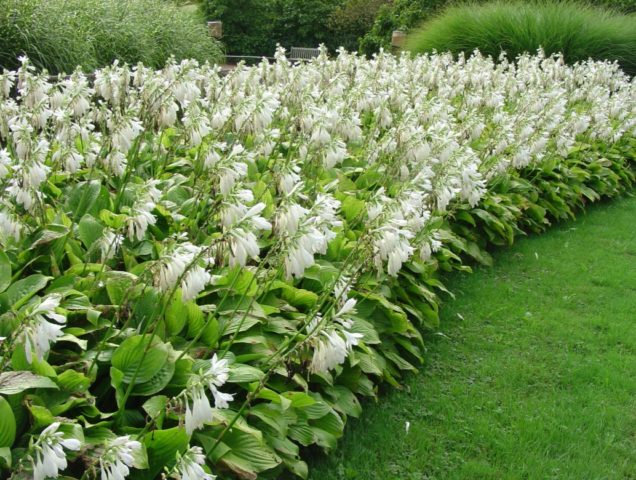
Healthy and strong hosts with excellent external data are obtained from seeds.
There are positive aspects to growing hosts with seeds:
- At the end of summer, seed pods appear on almost any flower bush, from which it is easy to collect seed.
- The health and quality of the bush depends entirely on the gardener.
- Great for decorating shady areas of the garden.
What hosta varieties can be grown from seeds
Almost any kind of flower can be grown from seed. But there is a list of the hosta species most beloved by gardeners that deserve special attention:
- Wavy - a variegated, bright variety with wavy, large leaves.
- Bloated - colorful hosta with greenery in the shape of a heart.
- Siebold - a variety of a waxy variety with heart-shaped leaves.
- Lanceolate - a dense, but very compact bush with narrow stems.
- Small - a low variety with a developed rhizome.
- Straight-leaved - hosta with vertical and narrow leaves.
- Ovoid - a flower with wide leaves and a massive bush resembling a ball.
It is better not to experiment with growing hybrid varieties of a flower - bushes of different characteristics can grow from such planting material.
What hosta seeds look like + photo
In order not to be mistaken with the necessary planting material, you should know how it looks. The seeds of the described plant resemble a small zest of dark brown color with a diameter of no more than 1 cm. They are located in place of faded buds in yellow dry capsules.
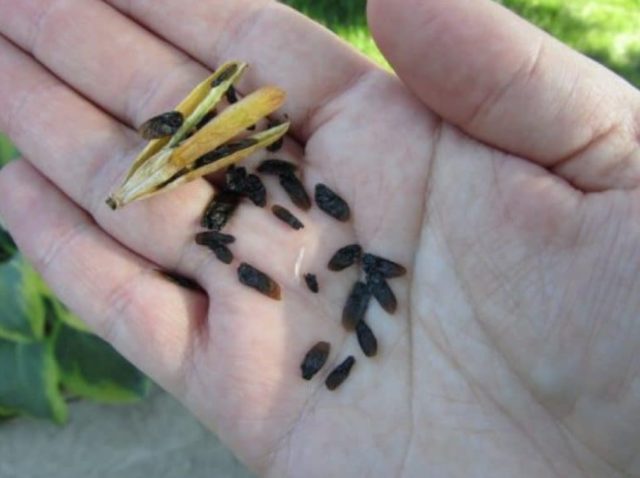
Ripe seeds can be harvested in August-September
How to harvest hosta seeds
To collect planting material for further cultivation, you need to wait until it ripens. This happens in the second week after pollination of the flower. More accurate time is the end of August or the first week of September. It is very important not to miss the moment when the hosta seed bolls acquire a rich brown color, dry out and open. It is at this moment that you need to start collecting seeds, having managed to carry out the procedure in a maximum of 5 days.
Drying and storage of hosta seeds
Before sowing the hosts with seeds, you need to properly prepare them: dry them, send them for storage until the start of planting and growing. To do this, the collected material is dried at high temperatures (300 degrees) for about 10 minutes, then placed in a refrigerator for 30 days.
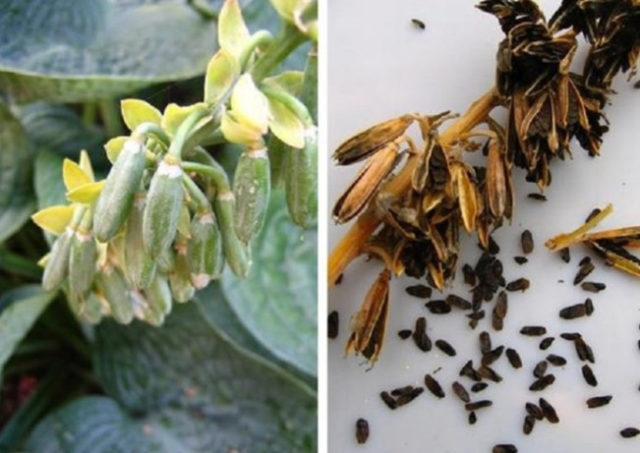
Seeds should be oblong and dark brown, shelf life - no more than 2 years
It is better to store hosta grains in small bags or paper towels. The main condition is the absence of direct sunlight and the temperature is not lower than 10 degrees.
Planting hosts with seeds at home
To grow the hosta yourself, you first need to sow it. To do this, you will have to take into account the appropriate planting time, select the container of the right size, prepare the soil and stimulate the seeds.
When to sow hosta seeds
There is no big difference when exactly sowing the hosts with seeds. In order for the seedlings to be strong for transplanting into open ground until stably warm weather, it is recommended to carry out this process in the first decade of January.
The choice of capacity and preparation of the soil
The key to growing a flower quickly and successfully is using the correct soil and suitable container. It is best to plant the seeds in a small plastic pot with several holes in the bottom.
You will need prepared soil for planting. For this, parts of perlite, peat and vermiculite of the same volume are combined in a large container. The finished composition is placed in the oven for a while (1-2 hours), then placed in a freezer for 24 hours.
A less time-consuming option is to treat the soil with a potassium permanganate solution, and wipe the pot from the inside with ordinary medical alcohol.
Preparing hosta seeds for sowing
Growing a flower begins with the preparation of its seeds. To do this, planting material should be placed in a freezer for stratification for 30 days, then soaked in aloe juice for 30 minutes.
How to plant hosta seeds
The next stage of cultivation is the embedding of the prepared elements into the soil. You just need to scatter the seeds over the surface of the prepared container, cover them with a small amount of earth and slightly moisten them.
Next, the workpieces are covered with polyethylene or glass is placed on top, and transferred to a room with a temperature ranging from 18 to 25 degrees. The first shoots of the hosts will appear after 21-25 days.

It is important to select the soil for growing hosts
To prevent young sprouts from getting sick, it is important to avoid direct sunlight. The stem develops very slowly, so its obligatory picking will be required. 14 days after the emergence of seedlings, you need to start hardening them little by little - to take the host to fresh air.
How to grow hosta seedlings from seeds
In order for green shoots to become healthy and strong planting material, you need to properly care for them. Cultivation of hosts should be carried out in accordance with such agrotechnical indicators as the correct temperature, regular watering, picking and the introduction of nutrients.
Microclimate
So that, 3 weeks after planting, young seedlings appear on the surface of the earth, their cultivation is carried out at the correct temperature - from 18 to 25 degrees. An improperly selected container can slow down this process: too low or too deep. The rhizome of the bush will fit perfectly in a pot up to 10 cm high.
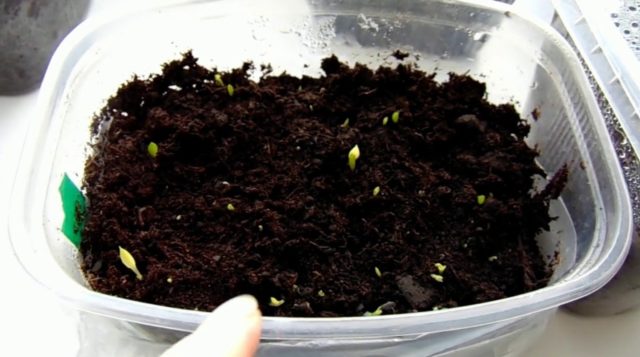
During cultivation, hosts need to constantly monitor the temperature in the room.
Watering and feeding schedule
To accelerate the growth and development of the hosta, it is enough to constantly water it and, if necessary, periodically feed it with nutrients.
It is recommended to moisten the seedlings at any time as the soil dries out. It is better to use filtered, not quite cold water for these purposes. The first sign of a liquid deficiency is the appearance of dry rusty spots on the tips of the sheets. The main thing is not to get water on the young shoots of the hosts, but to moisten only their root zone.
According to experienced gardeners, the cultivation of seedlings is carried out without additional fertilizing - the plant has enough nutrients from the soil, if it is correctly arranged at the stage of preparation. The only thing that is needed is to cover the surface with organic compost.
Picking
As soon as the first leaf appears on the seedlings, it's time to pick it. To do this, young bushes are moved to more spacious, necessarily sterile containers, with more nutritious soil. The top layer of the earth is covered with a small amount of sand. In the future, until the seedlings are transplanted into open ground, the hosts are watered by immersing the pot in a container with water.
Landing in the ground
As soon as the hot July days come, the cultivation of the hosta moves to a new stage - the movement of the grown and matured seedlings into open ground.
Stages:
- An area suitable for planting should be located in the shade of the garden.
- The soil must be dug up, all weeds must be removed from it.
- Each seedling will require a sufficient amount of free space, so the distance between the individual elements should be at least 50 cm.
- In order not to lose the slowly growing plant in the grass, it is recommended to enclose them.
- It is necessary to remove all weeds before transplanting the seedlings. In the future, it is better to weed the site weekly, otherwise it is easy to damage the delicate root of the flower.
- In order for the young shoots to grow well until the end of summer, you need to constantly water them with warm water (at least 2 times a week in the evening) and periodically loosen the soil.
It is important to understand that planting a hosta with seeds and then growing it is a long process. Until the end of the growing season, no more than 3-4 leaves will appear on the plant, which is quite normal. It may take at least 3 years for the host to acquire the desired appearance. This nuance should be taken into account before cultivating an ornamental bush on your own.
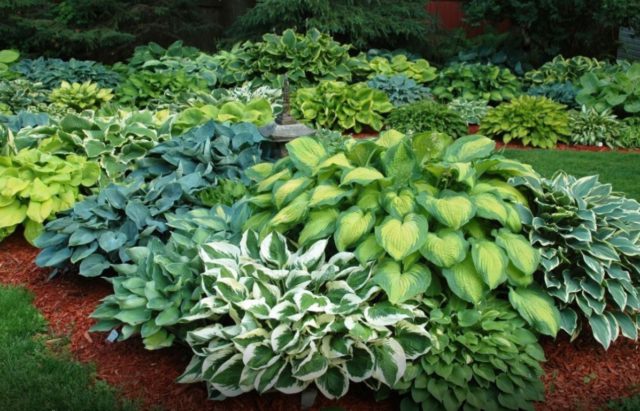
It is necessary to plant in open ground in July
Diseases and pests
In order for the plant to be always healthy, it is important to notice and eliminate its problems in time.
There are several main diseases in hosts:
- Virus X and HVX... Small round specks appear on the leaves, rapidly growing throughout the bush. It is impossible to cure a flower from a virus. The only solution is to burn the affected plants.
- Botrytis or gray rot... Affects leaves first, quickly spreads throughout the stem. In the early stages, spraying infected bushes with Bordeaux liquid or cuproxate will help.
- Phylosticosis... The fungus, which manifests itself as brown spots with a bloom, affects both the stems and flowers of the hosta. You will have to get rid of the infected elements of the flower. So that the disease does not spread, the plantings stop watering, and they begin to treat them with colloidal silver, potassium permanganate or pharmaceutical preparations.
- Root collar rot... An infection that causes the leaves of hosts to die. The infected parts of the plant should be cut off with a knife, treated with a fungicide and, if possible, transplanted into another pot.
- Rust... It appears due to severe dehydration of flowers.
The plant also has plenty of pests:
- slugs - characteristic silvery stripes with holes appear on the leaves;
- beetles and caterpillars - insects that quickly destroy the entire bush. Eliminate them with a special insecticide;
- nematodes - small pests that inhabit green stems in large numbers, leave behind black stripes. Unfortunately, there is no effective method of control, so the infected bush will have to be burned;
- rodents - infect the roots and damage the stems of the plant, which is why the hosta quickly fades. To eliminate the problem, bait with poison is used.
To notice and eliminate the problem in time, you need to periodically check the condition of the flower in the process of growing it.
Conclusion
It turns out that although it is problematic to grow a host from seeds, it is quite possible. You just need to adhere to the main stages of growing and properly care for the plant. After all, the host is unpretentious, and feels good even in shaded areas.

